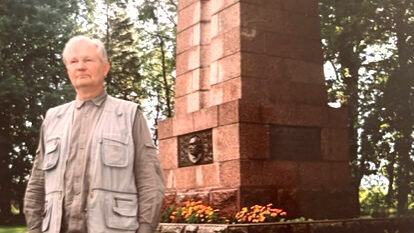The original NKVD list specified exactly 14,471 individuals. The actual number of deportees detained and sent did not meet the official quota. Russian historians have insisted that local Estonians were the creators of the list while Estonian historians have identified the NKVD as managing the compiling of names.
Survivors have indicated that for some victims it would take only the complaints of a hostile neighbour who informed the NKVD that the targeted family had listened to Finnish radio broadcasts or enjoyed a wealthy lifestyle.
In general designated for arrest and deportation were those identified as anti-Soviet: government officials, political elite, the military, police, business owners, individuals with relatives abroad, members of student organizations,representatives of foreign companies, clergymen, members of the Red Cross, etc. In all three Baltic states the massive operation began on the night of June 13. Families with no expectation of what’s about to occur were abruptly woken in the middle of the night, told to pack and placed onto trucks to be driven to 390 cattle cars located on rail sidings throughout Estonia.
Of the over 10,000 people so deported over 7,000 were women, children and the elderly. Accounts of survivors have described the inhuman cruelty of those carrying our the deportations. Even pregnant women and the seriously ill were shoved into packed cattle cars, to suffer two weeks in brutal, unhygienic conditions.
Western historians have maintained that the Soviets by these crimes against humanity and other acts of repression intended to deprive the people of their spirit and memory of an independent, democratic statehood.
But the only Russian narrative stresses crucial self-defense needs of the Soviet Union, that deportations were unavoidable and not as harsh as depicted by the West. According to the Kremlin, during war time, the rear had to be secured, made safe from sabotage that could jeopardize the Soviet military effort. Those capable of being a real threat were men of 25-50 years of age, but who made up only one fifth of those deported. Nearly 80 percent of the deportees were women, children, and the elderly – a group hardly likely to engage in damaging the Soviet war machine.
The June 14 deportations and the many that followed were actions deliberately executed to remove those societal groups that were expected to oppose the new totalitarian regime. Communists feared ideological dissidence and even more untrustworthy were those who might act accordingly.
Some have asked why we dwell on something that happened three generations ago. We should be forward looking and let the past fade into a distant memory. But Estonia as a nation has been molded by common experiences, victories as well as defeats, calamities as well as blessings.
We can’t let others, especially hostile adversaries, write our history, the story that is our identity. Our true history helps us understand the origins of our morals and the responsibility we must take for our choices.
Estonia is one of the many states neighbouring on Russia, the self-appointed and internationally-recognized successor to the Soviet Union, that refuses to bear any responsibility for the harm it caused in the region. Time will not exonerate Russia for the wrongs of the past. History remains with us.
Laas Leivat, Toronto




